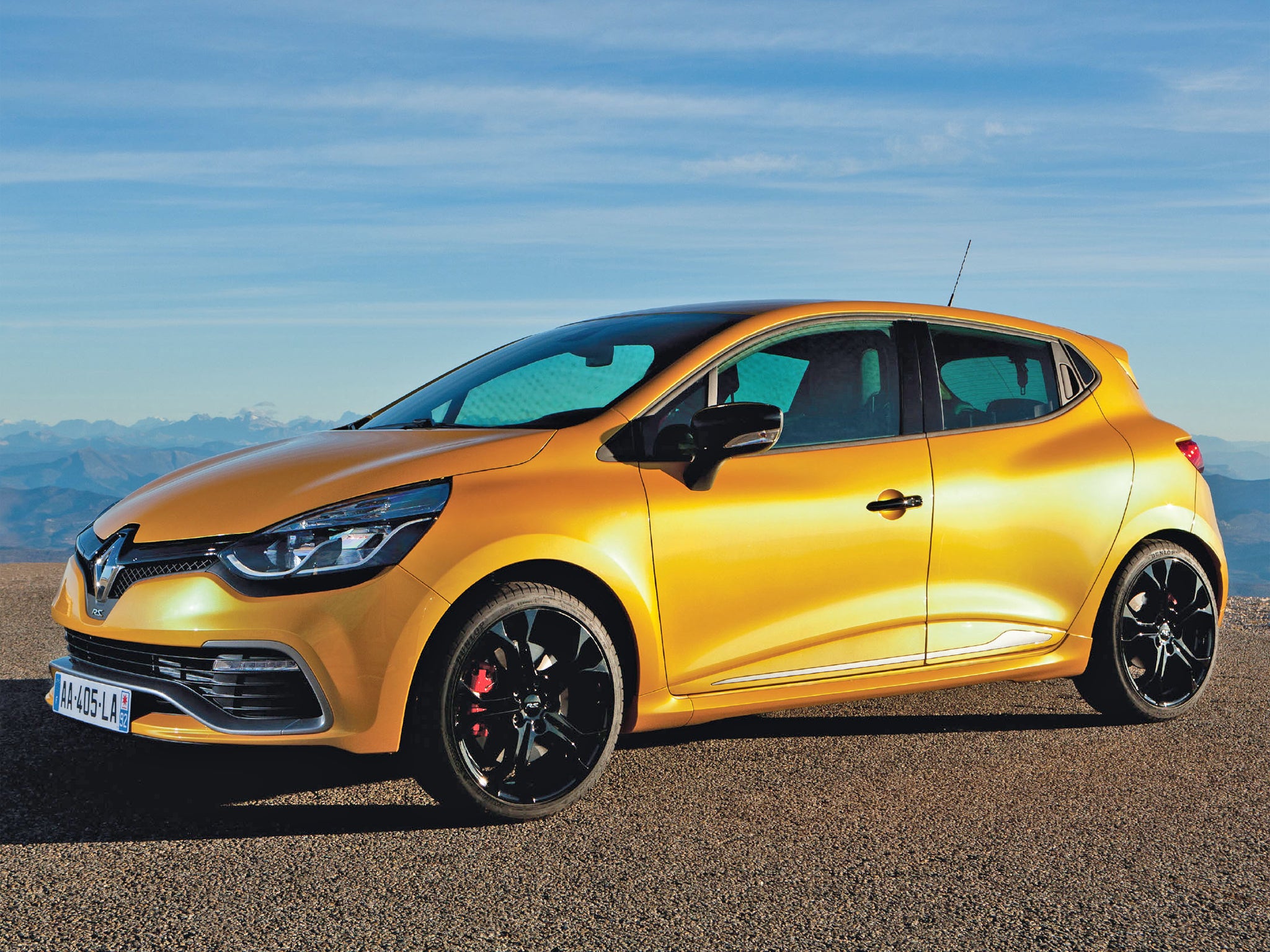Motoring review: Renault Clio RS 200 Turbo
The hatch is back – and it's all grown up

Price as tested: £21,050
Engine capacity: 1.6-litre turbocharged straight-4
Power output (bhp @ rpm): 200 @ 6,000
Top speed (mph): 143
0-62mph (seconds): 6.7
Fuel economy (mpg): 44.8 combined
CO2 emissions (g/km): 144
Like Brut aftershave and the hairy chest, the hot hatch is a relic of another age. It is a footnote in the death of flashy masculinity. In the 1970s and 1980s, you couldn't pull away from a traffic light without some Gary boy in a GTI roaring off amid a flurry of fluffy dice. Today, young men drive Kia Picantos – if they can afford the insurance.
So how retro of Renault to reheat the formula, taking the hatchback shell and cramming it with goodies. The Clio RS 200 comes from a long line of pocket rockets, dating back to the Renault 5 Gordini in 1976. Its rivalry with the Golf GTI during the 1980s was matched only by Borg and McEnroe. Successors include the gorgeous Clio Williams of the 1990s – the pin-up of my youth – with its trademark blue coachwork and gold wheels.
My RS 200 turned up in the colour scheme du jour – white with black wheels – which makes anything look fast. I don't know what the science behind this is; in nature, it's the colour scheme for sheep. The trouble with cars that look fast when standing still is that they raise expectations. It's no good pootling along at 50mph when you're screaming Lewis Hamilton.
Happily, there is a wolf beneath the sheep's clothing. Namely, a 1.6-litre turbo petrol engine delivering the hallowed 200hp at 6,000rpm, mated to an automatic six-speed double clutch: though smaller than the previous 2-litres, the turbo makes up for it, and when you ask it to shift, it obliges.
As is the fashion in supercars, there's no manual gearbox available, which is a shame. Instead, you get a well-adjusted automatic pedal and the option to play pretend Formula One using the paddle gear shifts tucked behind the steering wheel. This is a sophisticated bit of kit for a car that costs £20k fully loaded – £5k less than a GTI. Paddle shifting is fun for a while, and would be a laugh on a track; but it does fix your hands in the 10-to-two position. Just as fun to flip it into auto and let your foot bark orders.
But it's a curious gearbox. In town, it's occasionally sluggish, and with no throaty sounds from up front, it can feel like you're driving an ordinary Clio that happens to have red stitching on the steering wheel. The acceleration really comes into its own when surging ahead in high gears on the motorway. Mind you, this is no touring car: seats have no lumbar support, making long journeys painful. And, as I discovered minutes into a 1,000-mile round trip to Edinburgh, there's no CD player. Not having an iPod, I had to flip between Jeremy Vine and The World at One. More of a warm-hatch soundtrack.
The RS 200 has – like its owners – grown up. It is fatter, bloated, and even insists on five doors, which in my book makes it not a hot hatch at all, even if the rear door handles are concealed in the window frame, Alfa 156-style. And like the Alfa, forget about rear visibility – you might as well reverse with your eyes closed. But then the RS 200 is not for going backwards. Quite what it is for I'm still not sure. It may be for launching away from traffic lights at speed, which, it turns out, is what the RS button is for. You keep the brake on, rev to 2,000rpm, and let go, and it launches like a rocket. Handy, I suppose, for keeping up with Gary.
Join our commenting forum
Join thought-provoking conversations, follow other Independent readers and see their replies
Comments
Bookmark popover
Removed from bookmarks